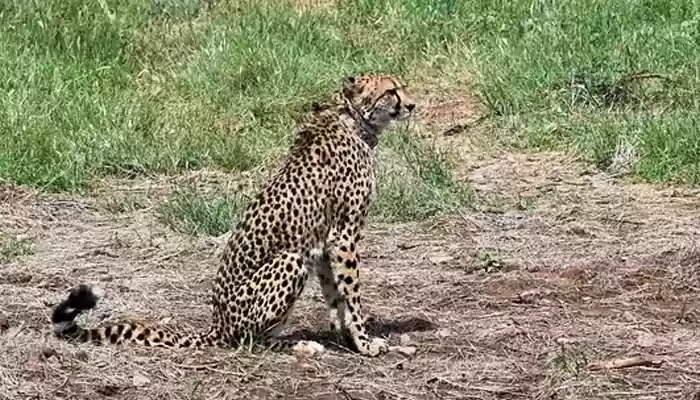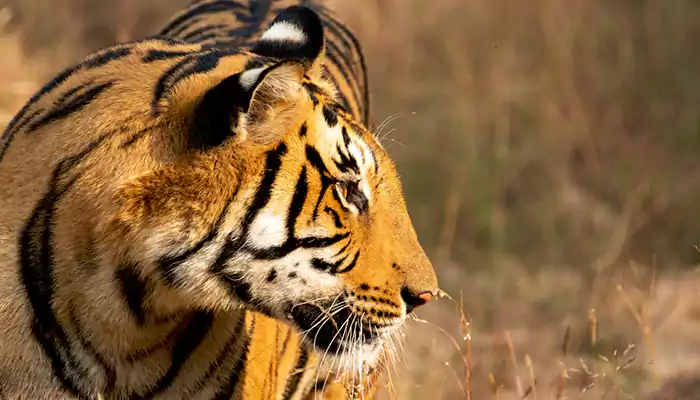Cheetah Deaths At Kuno National Park; What India Should Learn From The Recent Tragic Incident

The recent cheetah deaths at Kuno National Park have raised concerns about India's position on the reintroduction of the cheetah population!
In recent times, Kuno National Park in Madhya Pradesh has witnessed the demise of six adult cheetahs and three cubs. Initially, experts from the Cheetah Project Steering Committee attributed the deaths to infections caused by radio collars. However, the National Tiger Conservation Authority (NTCA), responsible for Project Cheetah's implementation, contradicted this assessment the following day, stating that all the cheetahs' deaths were a result of "natural causes."

In India, one can find some of the planet's most splendid yet endangered species. Among these, the cheetah, once extinct in the country, was on the verge of making a comeback, thanks to a range of well-considered efforts at all levels to guarantee their welfare and preservation. However, recent tragic incidents at Kuno National Park have cast a shadow over these efforts. In this blog, we'll explore the details of the unfortunate events surrounding the cheetah deaths at Kuno National Park. What lessons should we learn to avoid such incidents again? Let's take a look!
Project Cheetah
The cheetah disappeared from India approximately seventy years ago. However, in September 2022, as part of 'Project Cheetah,' a total of 20 adult cheetahs were imported from Namibia and South Africa to be accommodated in Kuno National Park. The objective was to revive the cheetah population in India. Moreover, cheetahs from Africa also gave birth to four cubs in Kuno National Park. Unfortunately, a series of cheetah fatalities followed. Three out of the four cubs did not survive, and in July this year, two male cheetahs passed away within a mere four-day period. Specifically, Tejas lost his life on July 11, while another cheetah named Suraj met the same fate on July 14.The causes of death
Experts have identified several factors that have led to the mortality of these cheetahs. Tejas, for instance, was found to have engaged in a violent altercation with a female cheetah based on post-mortem examinations. Unfortunately, he never recuperated from the psychological and physical repercussions of that fight. Beyond these conflicts, cheetahs have succumbed to a variety of causes, encompassing diseases, accidents occurring before Kuno National Park, and injuries sustained during hunting activities.The controversy
Nonetheless, there is also a dispute surrounding the utilization of radio collars on cheetahs. According to certain cheetah specialists, these collars remain consistently damp during monsoon seasons, resulting in skin infections among the cheetahs. These infections subsequently escalate into septicemia, causing severe bloodstream infections in the cheetahs. Some experts, in a matter brought before the Supreme Court, have expressed concerns that a portion of the cheetah fatalities “could have been prevented by better monitoring of the animals and more appropriate” and timely “veterinary care” - if these experts had been involved rather than being "ignored" and used as mere “window-dressing”.What can we learn to prevent such incidents in the future?
In the future, the implementation of cheetah reintroduction projects should involve careful and thorough planning. This should include comprehensive risk assessment, habitat evaluation, and disease screening as prerequisites for any ambitious undertaking of this nature. Additionally, continuous scientific monitoring is essential to assess their adaptation to the new environment and detect early signs of discomfort or health issues. International collaboration should also be sought in such ambitious projects to minimize tragedies like these in the future.Numerous critical concerns were raised in the aftermath of the Kuno incident. These concerns encompassed the insufficient level of veterinary care provided at Kuno, allegations of withholding information from experts, and the absence of a senior scientist to oversee the management and monitoring of the animals. These factors collectively contributed to the tragic demise of these magnificent cheetahs and the unfortunate events that unfolded. To prevent such incidents in the future, increased transparency and proactive measures are imperative.












